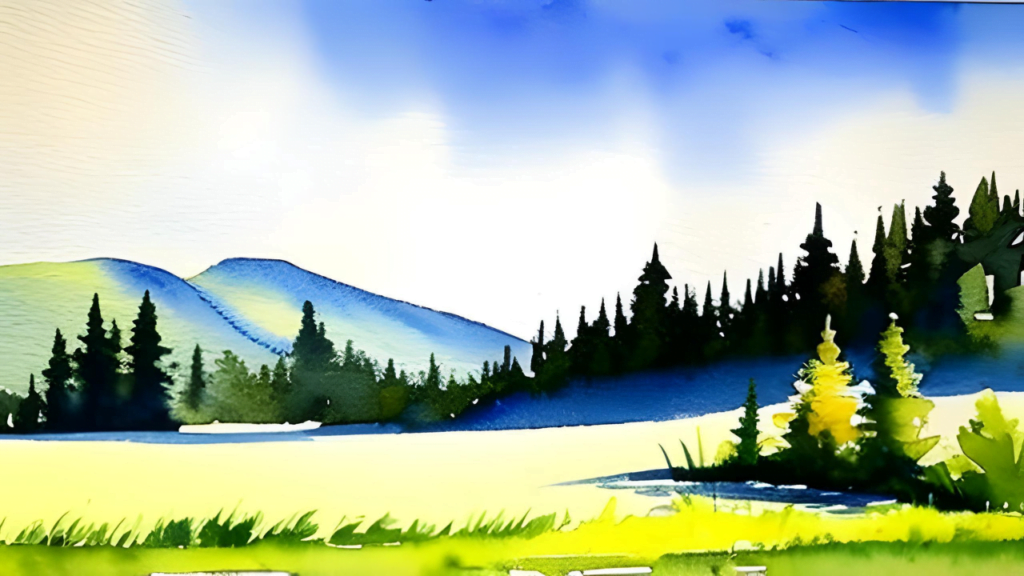
Painting Stunning Landscapes with Gouache: A Step-by-Step Guide
Learn how to create breathtaking landscape paintings with gouache. Follow our expert guide for step-by-step instructions, tips, and techniques. Perfect for artists of all skill levels.
Landscape painting with gouache offers a unique and vibrant way to capture the beauty of nature on paper. Whether you’re a seasoned artist or just starting your creative journey, this guide will walk you through the process of creating stunning landscape artwork using gouache. From selecting the right materials to mastering essential techniques, you’ll find everything you need to create captivating scenes that come to life.
Getting Started with Gouache Landscape Painting
Gouache, a versatile and opaque watercolor medium, is perfect for capturing landscapes’ rich colors and textures. Before you begin, make sure you have the following materials:
- Gouache paints in a variety of colors
- Watercolor paper or mixed-media paper
- Assorted brushes (flat, round, and detail brushes)
- Water container
- A palette for mixing colors
- Paper towels or a cloth
- Pencil and eraser
- Reference images of landscapes
Sketching Your Landscape
Start by lightly sketching the basic elements of your landscape on the paper using a pencil. Focus on the main shapes and composition. Pay attention to the placement of objects and the overall balance of the scene.
Applying Gouache Paints
Background: Begin with the sky and distant elements. Mix the desired colors on your palette and apply them using a large brush. Use a light touch to create soft, subtle transitions.
Middle Ground: Gradually work your way forward, adding more detail and vibrant colors to the middle ground. Use a combination of broader strokes and finer details to create depth.
Foreground: Add the details and textures of the foreground elements, such as trees, rocks, and foliage. Experiment with layering to achieve the desired level of opacity and texture.
Techniques for Realistic Landscapes
Layering: Gouache is known for its layering capabilities. Apply thin, transparent layers for smooth transitions and build up thicker layers for more intense colors and textures.
Dry Brush: Use the dry brush technique to create textures like grass, leaves, and tree bark. Load your brush with paint and gently drag it across the paper’s surface.
Blending: Blend colors seamlessly by layering wet paint onto wet paint. This technique is excellent for creating gradients and soft transitions.
Lifting: Gouache can be lifted even after drying. Use a damp brush or a cloth to gently lift off paint and reveal lighter areas.
Creating Depth and Atmosphere
To add depth and atmosphere to your landscape, consider these techniques:
Linear Perspective: Use converging lines to create the illusion of depth and distance.
Aerial Perspective: Lighten colors and reduce contrast for distant elements to create the illusion of depth and atmospheric perspective.
Frequently Asked Questions
Can I use gouache on regular watercolor paper?
Yes, gouache works well on watercolor paper. However, using a heavier or mixed-media paper can better handle gouache’s opacity and layering.
How do I prevent gouache from cracking?
To prevent cracking, avoid applying extremely thick layers. Gouache should be applied relatively thinly, and you can add a small amount of water to your paint to enhance its flexibility.
Can I use gouache with other mediums?
Yes, gouache can be used alongside watercolors, colored pencils, and even acrylics. Experiment to find unique combinations that suit your style.
How do I achieve vibrant colors with gouache?
Gouache naturally offers vibrant colors. To make them pop, layer complementary colors, and consider using white gouache to enhance highlights.
Can I paint details with gouache?
Absolutely! Gouache is great for both broad strokes and intricate details. Use finer brushes for precise lines and small elements.
How do I frame and protect gouache paintings?
Frame your gouache painting under glass to protect it from dust and moisture. Using a mat can prevent the painting from touching the glass directly.
Conclusion
Landscape painting with gouache allows you to express your creativity while capturing the beauty of nature. By following the steps outlined in this guide, you can create breathtaking landscapes that showcase the unique qualities of gouache. Remember to experiment, practice, and enjoy the process of bringing your artistic vision to life. Whether you’re a beginner or an experienced artist, gouache provides endless possibilities for creating stunning and vibrant landscape artwork.
Please get in touch with us for a quote today. Send us a message at: fifetrades@gmail.com. Contact us: Contact “https://fifetrades.co.uk/contact/” About us: Read “https://fifetrades.co.uk/about-us/” Our services: Services “https://fifetrades.co.uk/services/“
